How could the current generation be and feel secure in 2030?
Society has been getting more and more dominated by technology. The rise of digital tools in the hand of the public is paralleled by a rise of digital harm techniques towards users. There are two aspect of technology, one that seemingly endangers data, privacy and control and one that enhances, improves or replaces redundant systems. With the adaptation of new (and unstable) technologies, questions rise about local, national or international application of these. What does security mean?
For instance, humans deal with the notion of security based on a un-constructive mixture of feelings and facts; does the feeling of insecurity justify labelling city areas as criminal? Digital manipulations in the form of fake news are becoming more prominent in the mainstream news intake and the individual has been given more tools to physically or digitally protect themselves. In fact, it has led to questions on the scope for the concept of security itself.
When we think about the future of security, we won’t focus on the Police organization itself, rather the practice of policing: Creating secure environments, preventing danger and mitigating threats. In this project, we would like to focus on the digital natives, the ones that have grown up in a digital environment. What do they do/need to be and feel secure in the physical world as well as the digital world?
The process
Over a total of 6 sprints, each lasting almost 3 weeks, we were able at the end of the program to formulate a starting point for a conversation about this sensitive topic. Our work focused mainly on creating tools based on design research that could be used by the Dutch police to gain more insight into their users, in this case the Dutch population. We focused on interactive and fun experiences that either visualized the data in realtime, or added a storytelling dimension.
prototype #1 - feeling secure and current safety measures
Paper prototype of the first survey we did about safety measures
What does feeling secure mean?
What safety measures do digital natives take to feel secure?
To start collecting our own data on security, we first created a survey. The main idea was to test the safety preferences of our own generation: the digital natives. We asked ourselves the question: “What do digital natives do to be and feel secure?”. When we looked for a framework to categorize our findings in, we found the term “holistic security”. This states that security measures can be divided over three realms: digital security, physical security and psychosocial security. Digital security entails online and offline security measures for hardware and software use. Physical security entails more obvious safety measures that protect our material possessions. Psychosocial security discusses personal boundaries and self care.
prototype #2 - General perception of the police
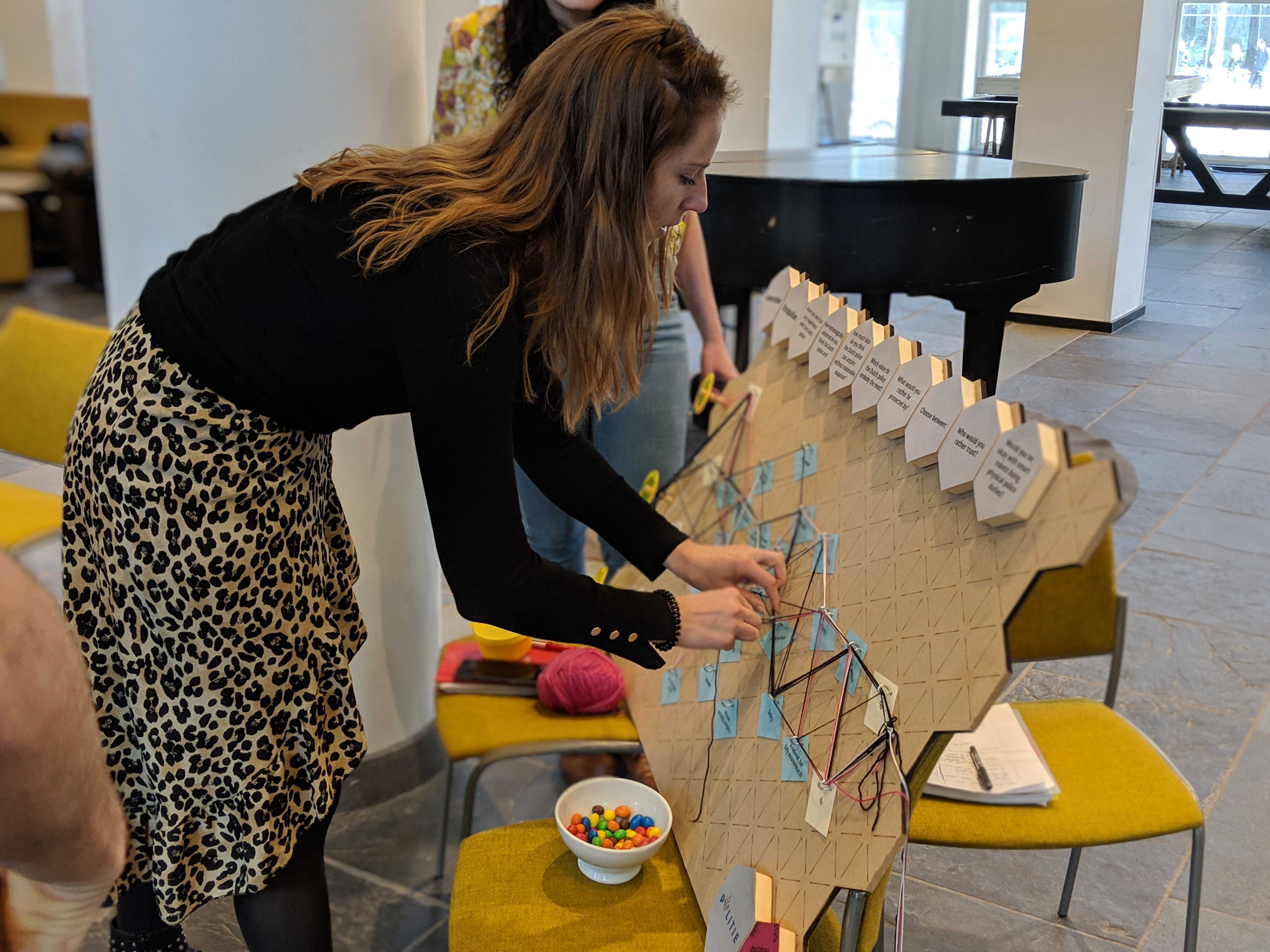
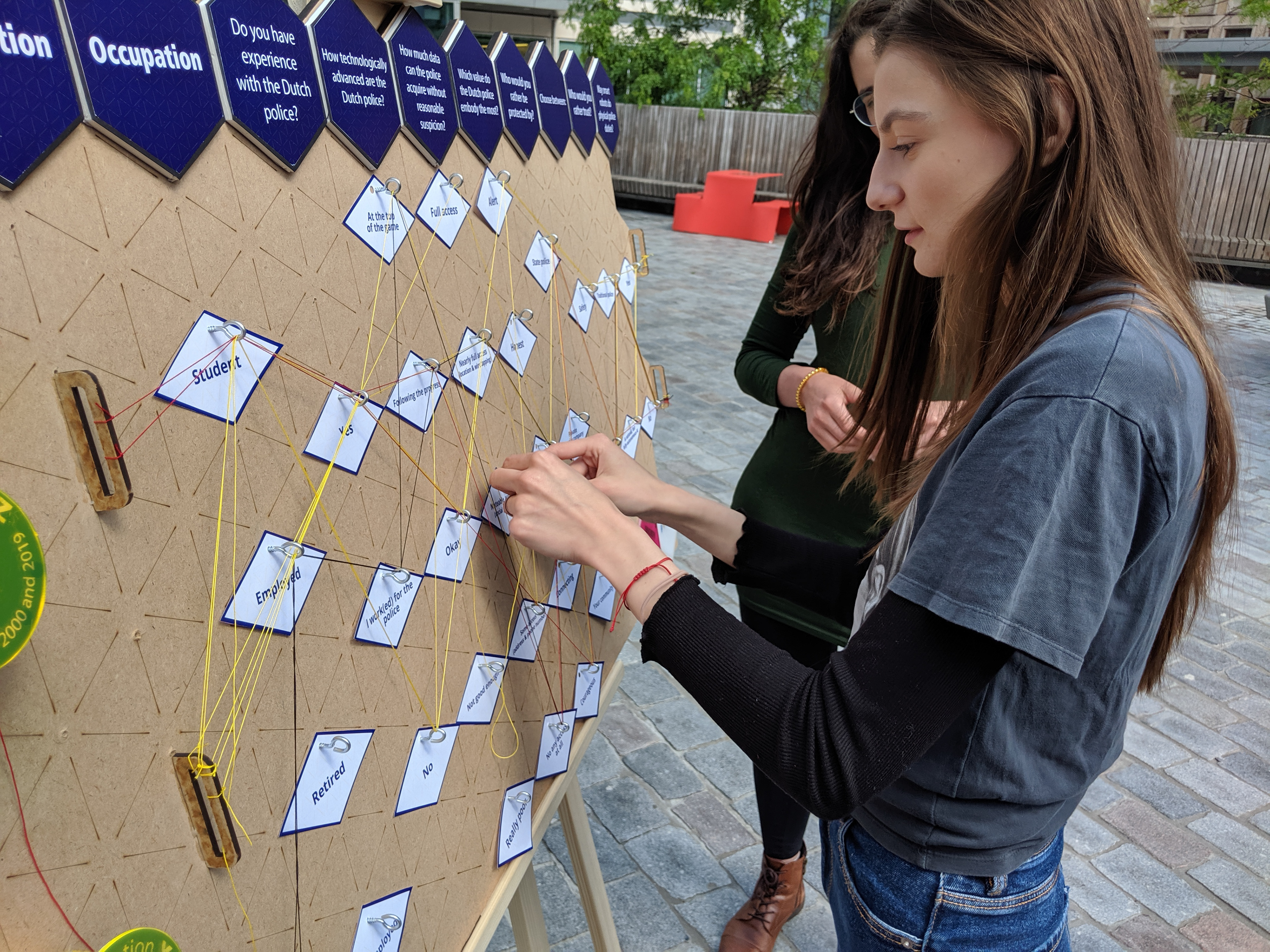
How do digital natives perceive the Dutch police?
How much do digital natives know about their capabilities?
Inspired by a design from the multidisciplinary design agency Domestic Data Streamers, we chose to create a data visualization board. The idea is that participants can actively answer questions and over the course of time, questions will accumulate creating patterns of answers. This fun and interactive piece invites people to engage with the survey in a more captivating manner and also provokes a discussion as the most common answers are already visible on the board.
prototype #3 - Police & ai: the future of policing
What do digital natives know about police and AI?
How do people feel about the police's use of technology?
“We hoped that by turning a standard questionnaire into an immersive experience we allowed participants to answer in accordance with their true feelings and provoke relevant discussions. By answering those questions, you also have a real impact on the course of our research and ultimately help the Dutch police in understanding people’s perception of AI." from a published article written by Ola Bonati on Digital Society School’s Medium page.
Tnw
We had the chance to go to the Next Web, one of the largest tech conferences in Europe, to display and test our prototype there thanks to our partners at the police. With our prototype concept in mind, we had three things we wanted the installation to have: to attract visitors’ attention, to offer a memorable and fun experience, and to collect the necessary data for our research.
What was distinctly fruitful was the interesting discussions that happened after people at the conference would try out the time machine. Some would ask us about what we were investigating at times and at other times, we would be the ones asking them about their experince. These conversations gave us more ideas and directions that we hope would be explored further by the teams after us.
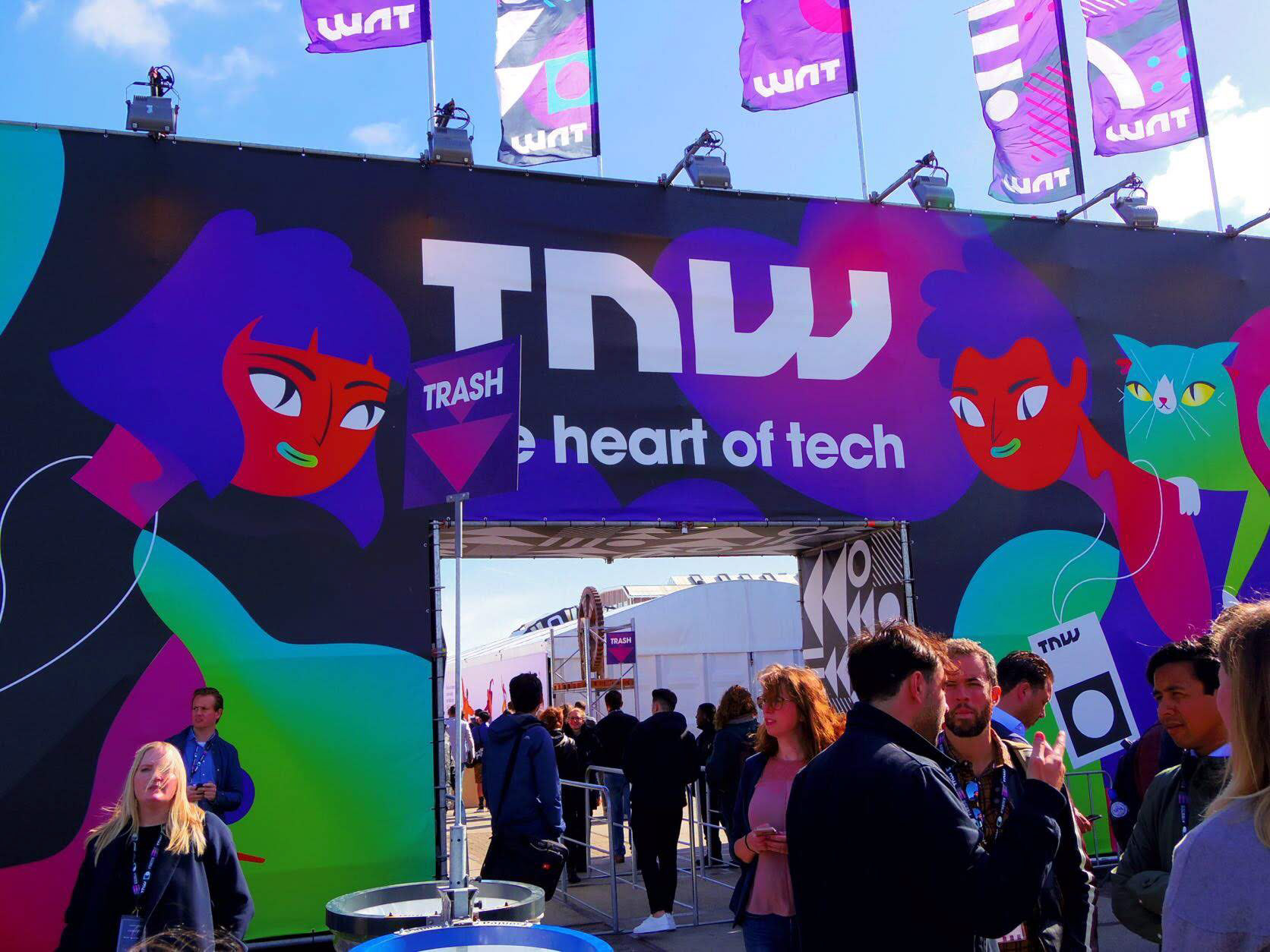

Prototype #4 - digital documentation
As a digital documentation to what we have done throughout the program and a continuation to the survey done through the Time Machine, we created a website that briefly explains our process and through which you can answer the survey questions and watch the videos.
Final showcase
Meet the team

Lama Ahmed
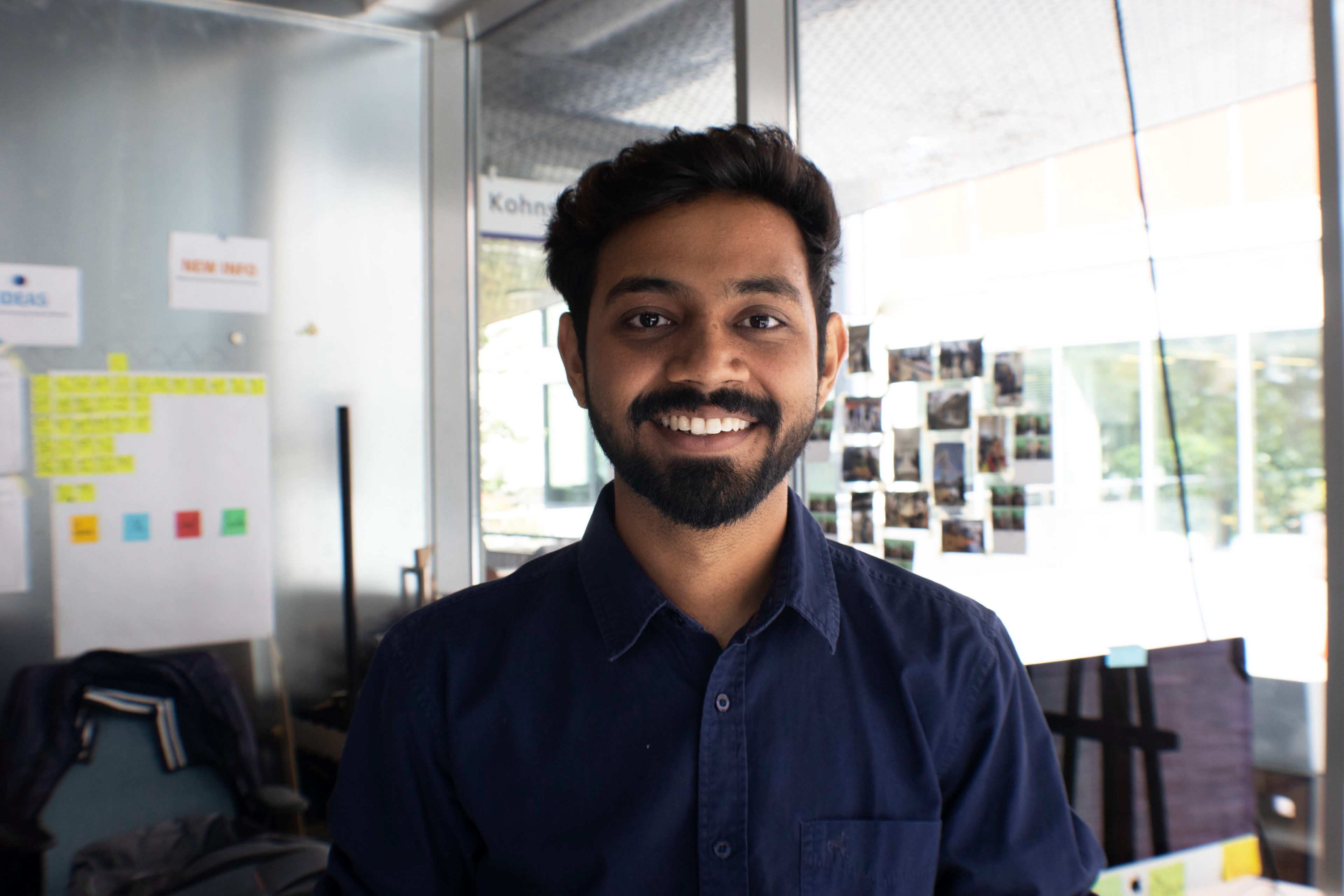
Neel Koradia

Ola Bonati
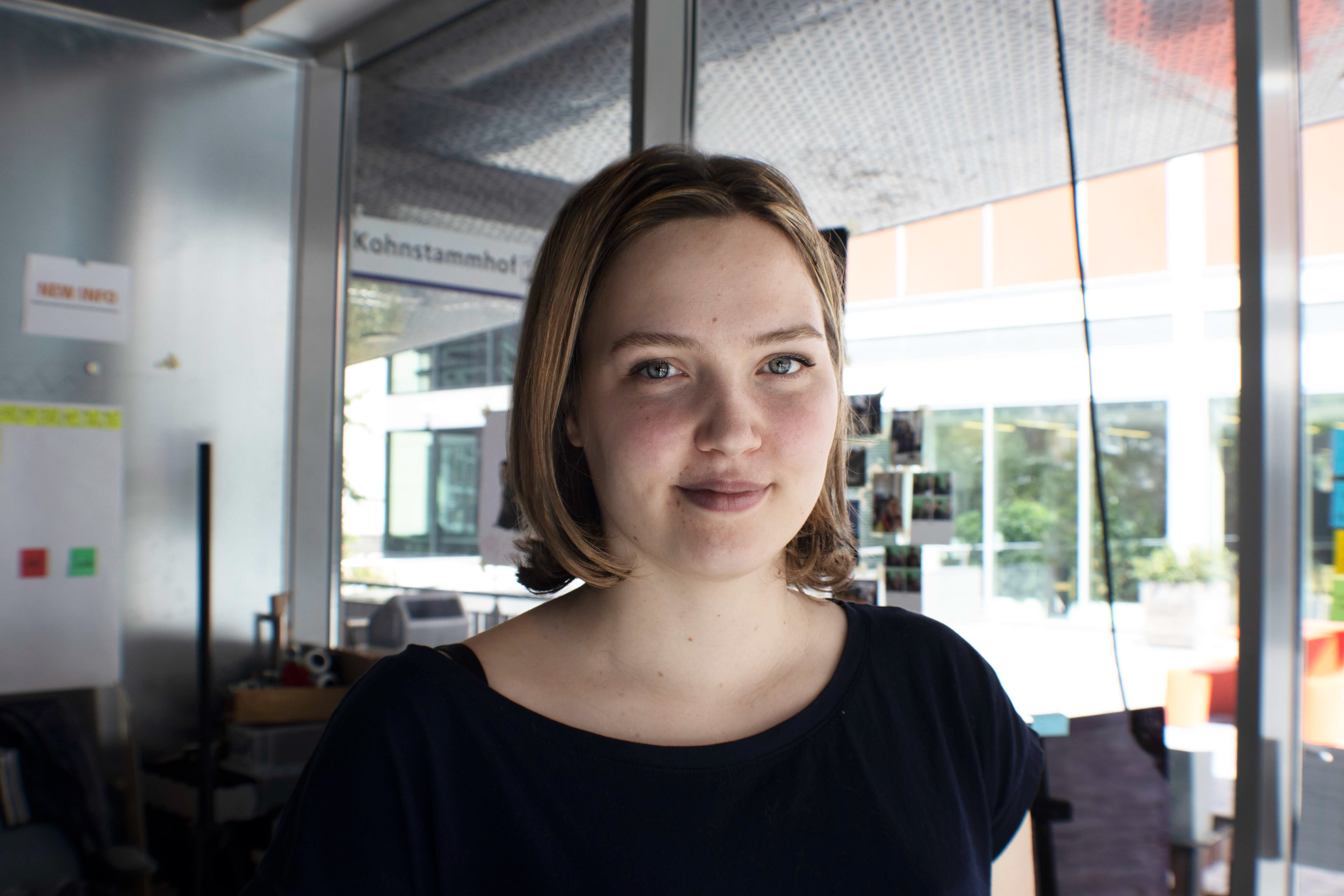
Sascha Vonk
About digital society school
Digital Society School is where people get together to “research the impact of technology on society, develop the skills necessary to guide the transformation and pass on this knowledge and these skills to a new generation of professionals. They are ready to begin work on the United Nations Sustainable Development Goals for 2030. They will be the architects of transformation, across the world as well as in your organization.”